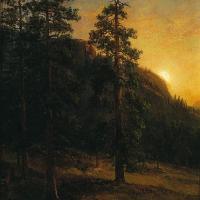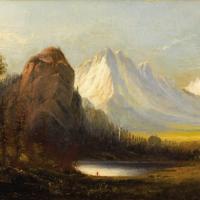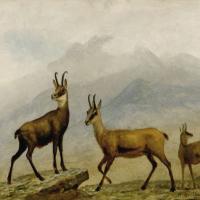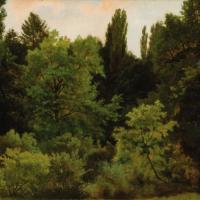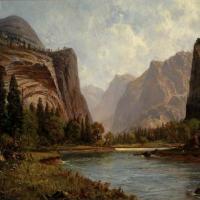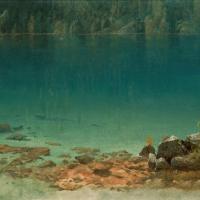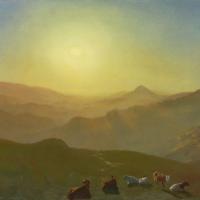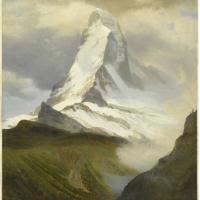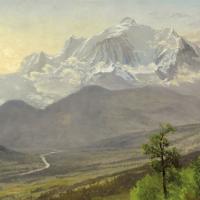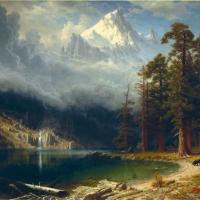Albert Bierstadt
Autumn Forest
$480.00
California Redwoods
$480.00
Cathedral Rock
$480.00
Chamois
$480.00
Deep In The Rockies
$480.00
Deer In Mountain Home
$480.00
Forested Hills
$480.00
Gates Of The Yosemite
$480.00
Guerrilla Warfare
$480.00
Indian Encampment - Evening
$480.00
Island Of New Providence
$480.00
Lake In The Sierra Nevada
$480.00
Lake Scene
$480.00
Low Tide At Grandcamp
$451.00
Mont Blanc
$480.00
Mount Corcoran
$480.00
Mountain House
$480.00
Mountains
$480.00
Nevada Falls
$480.00
Old Faithful
$480.00
Outlet At Lake Tahoe
$480.00
Albert Bierstadt
Albert Bierstadt (1830-1902)
Albert Bierstadt (January 7, 1830 – February 18, 1902) was a German-American painter best known for his lavish, sweeping landscapes of the American West. To paint the scenes, Bierstadt joined several journeys of the Westward Expansion. Though not the first artist to record these sites, Bierstadt was the foremost painter of these scenes for the remainder of the 19th century.
Born in Prussia, Bierstadt was brought to the United States at the age of one by his parents. He later returned to study painting for several years in Düsseldorf. He became part of the Hudson River School in New York, an informal group of like-minded painters who started painting along the Hudson River. Their style was based on carefully detailed paintings with romantic, almost glowing lighting, sometimes called luminism. An important interpreter of the western landscape, Bierstadt, along with Thomas Moran, is also grouped with the Rocky Mountain School.
In 1851, Bierstadt began to paint in oils. He returned to Prussia in 1853 and studied painting for several years in Düsseldorf with members of its informal school of painting. After returning to New Bedford in 1857, he taught drawing and painting briefly, before devoting himself full-time to painting.
In 1858, Bierstadt exhibited a large painting of a Swiss landscape at the National Academy of Design, which gained him positive critical reception and honorary membership in the Academy.
In 1860, he was elected a member of the National Academy of Design; he received medals in Austria, Bavaria, Belgium, and Germany.
Financial recognition confirmed his status: The Rocky Mountains, Lander's Peak, completed in 1863, was purchased for $25,000 in 1865.
Despite his popular success, Bierstadt was criticized by some contemporaries for the romanticism evident in his choices of subject and his use of light was felt to be excessive.
In 1882, a fire destroyed Bierstadt's studio at Irvington, New York, and with it many of his paintings. By the time of his death on February 18, 1902, the taste for epic landscape painting had long since subsided. Bierstadt was then largely forgotten. He was buried at the Rural Cemetery in New Bedford, Massachusetts.
Bierstadt was a prolific artist, having completed over 500 paintings during his lifetime.



